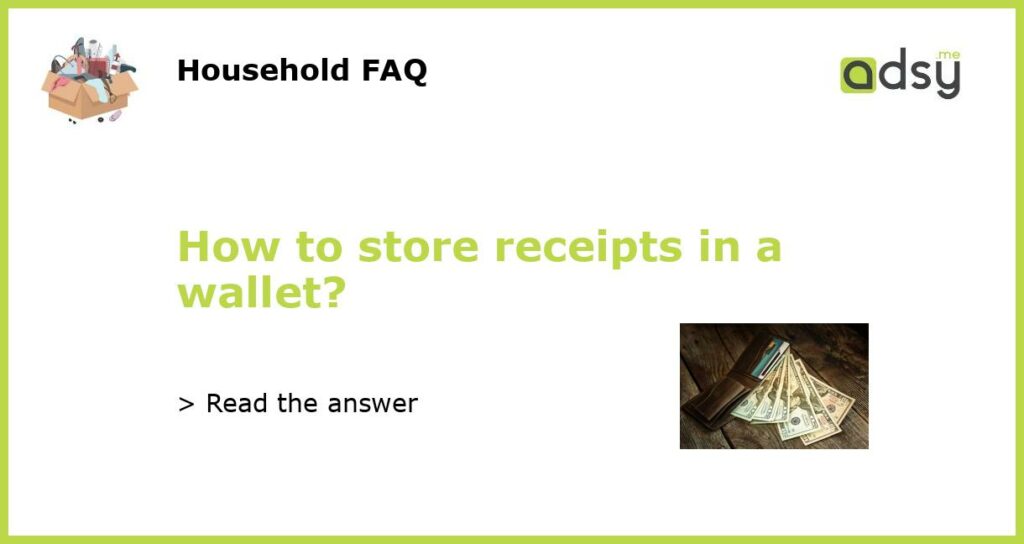Organize your wallet
If you want to store receipts in your wallet, it’s important to have an organized wallet that provides designated spaces for storing receipts. Look for a wallet that has multiple compartments or card slots, as this will make it easier to separate and categorize your receipts.
Use separate compartments
Once you have an organized wallet, assign specific compartments or slots for your receipts. This will help you keep track of where your receipts are and avoid them getting mixed up with your cash or cards. Consider using different compartments for different types of receipts, such as one for grocery receipts and another for retail receipts.
Fold and store receipts properly
When placing receipts in your wallet, it’s important to fold them neatly to avoid them taking up too much space and becoming disorganized. Fold the receipt in half or thirds, depending on the size, and tuck it into the designated compartment. Make sure you can still see the important information on the receipt, such as the store name, date, and total amount.
Remove expired or unnecessary receipts
Regularly go through your wallet and remove any expired or unnecessary receipts. This will help avoid clutter in your wallet and make it easier to find the receipts you actually need. If the receipt is for an expense that you no longer need to keep track of, such as a coffee or lunch receipt, it’s safe to remove it from your wallet.
Consider using digital storage options
If you find that storing receipts in your wallet is not practical for you or you often lose them, consider using digital storage options. There are a variety of mobile apps that allow you to scan and store your receipts digitally, making it easy to access and organize them. Some popular options include Expensify and Shoeboxed.






